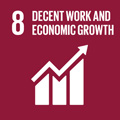- Docente: Massimo Fornasari
- Credits: 6
- SSD: SECS-P/12
- Language: Italian
- Moduli: Massimo Fornasari (Modulo 1) Mauro Carboni (Modulo 2)
- Teaching Mode: Traditional lectures (Modulo 1) Traditional lectures (Modulo 2)
- Campus: Forli
- Corso: Second cycle degree programme (LM) in Economics and Commerce (cod. 0905)
-
from Apr 07, 2025 to May 13, 2025
-
from Apr 14, 2025 to May 12, 2025
Learning outcomes
This course is designed to provide students with an understanding of the evolution of both financial techniques and financial systems in a broad historical perspective. Topics will include institutional innovations, formation of financial markets, interplay of financial development and economic growth. Special consideration will be devoted to the complex relationship of public and private finance in shaping modern financial system.
At the end of the course students will be able to:
- place in historical perspective the main themes in financial theory;
- understand the working of State finance;
- identify key links connecting finance and economic development;
- understand the origin of modern financial system.Course contents
Part I - Private finance from pre-industrial Europe to the modern world (Prof. Massimo Fornasari)
1. Europe, Commercial Revolution and Finance (XIII-XV centuries)
2. Finance and territorial states (XVI-XVIII centuries)
3. Financing British Industrial Revolution
4. The Second Industrial Revolution and the role of modern financial systems: from the mid-nineteenth century to the crisis of 1929
5. Regulation and Deregulation from the Thirties to the Present Day
Part 2 - Public finance from city-states to the Welfare State (prof. Mauro Carboni)
1. At the origins of modern public finance
2. From the "minimum" State to the Welfare State
Readings/Bibliography
Adequate preparation should start with the study of the slides projected in class, and downloadable from Virtual.it; the slides cover both the history of public and private finance.
The course topics are explored in the following texts.
M. Fornasari, La banca, la borsa, lo Stato. Una storia della finanza (secoli XIII-XXI), Torino, Giappichelli 2019.
M. Fornasari, Puzzle. Una storia del denaro (in corso di stampa)
M. Carboni, Stato e finanza pubblica in Europa dal medioevo a
oggi, Torino, Giappichelli 2008
Teaching methods
Lectures and special topic seminars
Class attendance is strongly recommended; it will result in a "bonus" on the exam.
Assessment methods
As of today, the exam is expected to take place online on the EOL platform. The exam consists of 24 quizzes (16 related to the I module and 8 related to the II module) with a choice between 4 answers, and 2 essays "componimenti" (one per module) which will be given up to 5 points each: the maximum total score is 34 points.
Regarding the evaluation of the exam, the following correspondence between descriptors and marks in thirtieths is reported
- <18 insufficient
- 18-23 sufficient
- 24-27 good
- 28-30 excellent
- 30 e lode excellent
Teaching tools
Projection of slides, which follow the reconstruction of the history of finance on the long term
Office hours
See the website of Massimo Fornasari
See the website of Mauro Carboni
SDGs



This teaching activity contributes to the achievement of the Sustainable Development Goals of the UN 2030 Agenda.
